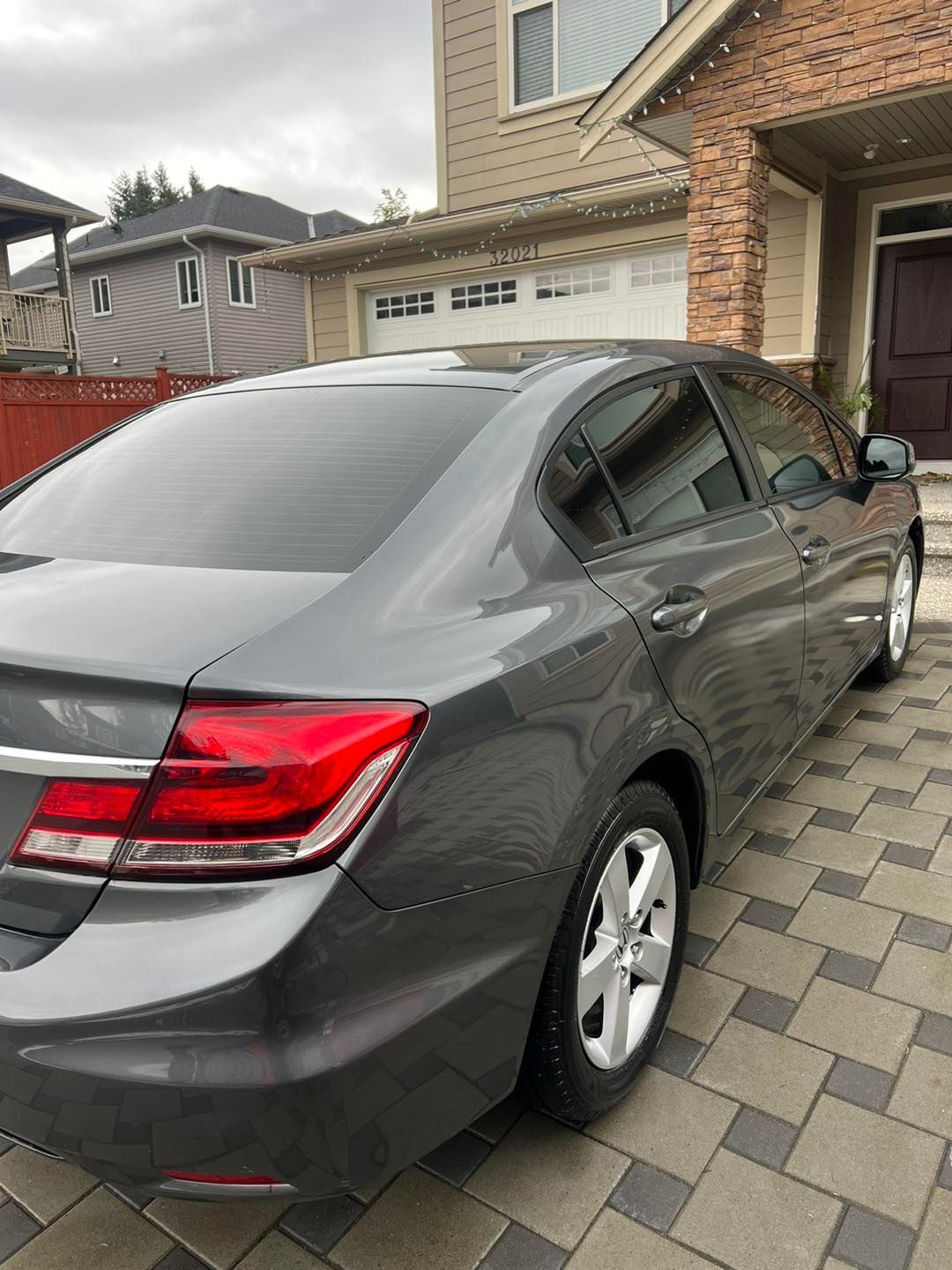
Experience the ultimate automotive transformation: Ceramic Coating. A breakthrough in auto-detailing that not only improves, but also protects your vehicle from extreme environmental risks.
But how do you reach perfection? How can you maximize the benefits of this advanced technology for a long-lasting, flawless finish? Whether you're a seasoned professional or a beginner looking to dive into the world of ceramic coatings, this comprehensive guide will answer every query and debunk myths.
Preparing the Surface for Ceramic Coating
Before applying a ceramic coating to your vehicle, it is crucial to properly prepare the surface for optimal adhesion and a flawless finish. Surface preparation involves cleaning and decontaminating the paint, as well as correcting any imperfections. This step is essential to ensuring that the ceramic coating bonds effectively with the paintwork, maximizing its durability and performance.
To begin the preparation process, thoroughly wash your vehicle using a pH-neutral car wash shampoo or soap. This will help remove dirt, grime, and any loose contaminants from the surface. Avoid using harsh detergents or household cleaners, as they can potentially damage the paintwork.
Once the vehicle is clean, it's time to address any embedded contaminants, such as tar, tree sap, or bug splatters. These can hinder the bonding of ceramic coatings and affect their longevity. Utilize a dedicated tar remover or solvent to safely dissolve and remove these contaminants. It's important to exercise caution and follow product instructions to prevent damaging the paint.
Imagine you have a black sedan that has accumulated road tar on its lower panels. Applying a ceramic coating to this residue would compromise both its appearance and performance. By using a reliable tar remover and diligently removing these contaminants beforehand, you ensure a pristine canvas for the ceramic coating.
After tackling embedded contaminants, consider performing a clay bar treatment. Clay bars are effective in removing stubborn substances like industrial fallout, stubborn brake dust, or overspray particles that simple washing may not adequately eliminate. Gently rub the clay bar over lubricated surfaces in straight lines to pick up those impurities embedded in the clear coat.
Next, closely inspect your vehicle for any paint imperfections, such as swirl marks, light scratches, or water spots. While ceramic coatings can enhance gloss and hide minor flaws to some extent, it is best to correct significant imperfections before applying the coating for an immaculate result. Paint correction can involve techniques like machine polishing using appropriate compounds and pads to restore a smooth, blemish-free surface.
Remember, the key to achieving the best outcome during surface preparation is patience and attention to detail. Taking the time to thoroughly clean, decontaminate, and correct any paint imperfections will provide a solid foundation for the ceramic coating.

Ceramic Coating Application Process: Dos and Don'ts
Applying a ceramic coating requires careful attention to detail and adherence to specific guidelines. Following the correct steps will ensure a flawless finish and maximum effectiveness of the coating, while avoiding common pitfalls can save you time and frustration.
Let's explore some dos and don'ts of the ceramic coating application process.
Do: Start by thoroughly washing and decontaminating your car's exterior before applying the ceramic coating. This ensures that the surface is free from dirt, debris, and any existing waxes or sealants that may interfere with proper adhesion. A two-bucket method using a grit guard is recommended to prevent scratching the paint during the wash.
Don't: Make the mistake of skipping proper surface preparation. Neglecting this crucial step can lead to subpar results and decreased longevity of the ceramic coating.
Do: Follow the manufacturer's instructions regarding application techniques, such as priming applicator pads or using cross-hatch patterns for even coverage. Applying multiple thin layers is generally recommended for better bonding and durability.
Don't: Apply too many products in one go or rush through the application process. Thick, uneven layers can result in visible streaks or high spots that are difficult to correct once dried.
Do: Allow sufficient curing time between each layer as specified in the instructions. This ensures proper bonding of the coating to the paint surface and maximizes its effectiveness.
Don't: Attempt to expedite the curing process by using excessive heat or exposing the freshly applied coating to water. Premature exposure to water can cause spotting or streaking, while excessive heat may lead to uneven drying or premature failure of the coating.
By following these dos and avoiding the corresponding don'ts, you'll be well on your way to achieving a flawless ceramic coating finish that enhances your car's appearance and provides long-lasting protection.
Professional Ceramic Coating Installation vs. DIY
While the appeal of DIY ceramic coating solutions stems from their low cost and ease of use, the value of expert application cannot be overemphasized. A competent detailer brings knowledge to the table, assuring complete preparation and exact application of the ceramic finish.
Professionals have considerable expertise and training in surface preparation processes such as paint cleaning and correction, which are required for an exquisite finish before applying the coating. They can accomplish these jobs with accuracy because they have access to specialized tools and equipment, which is sometimes difficult for DIY enthusiasts.
Consider attempting to apply a high-quality ceramic coating without a complete understanding of paint repair or cleaning details. Even if the coating is applied, existing faults or contaminants on the paint surface may inhibit good adhesion, resulting in a poor finish. A competent detailer, on the other hand, assesses the vehicle's condition, identifies areas that need to be rectified or cleaned, and carefully completes these duties before applying the ceramic coating. This fosters robust bonding and, as a result, long-lasting protection.
Professional ceramic coating treatment not only makes sure that the surface is properly prepared, but it also offers many advantages over do-it-yourself options. For the best results, you need to follow certain steps and have certain skills and knowledge. Professionals with years of experience know this process inside and out. They know how to properly prepare the surface of the car, fix any paint problems that need fixing, and make sure that the ceramic covering goes on smoothly.
Diamond Shine Detail & Ceramic Coatings in Abbotsford, British Columbia, has professionals with the skills needed for excellent ceramic coating services. Thanks to extensive training and a dedication to staying up-to-date with changes in the industry, these professionals consistently produce excellent results, making sure that your vehicle gets the care it requires.
Mistakes to Avoid While Using Ceramic Coatings
To make the most of your ceramic coating and ensure its longevity, it is important to avoid certain mistakes that could compromise its effectiveness. By steering clear of these pitfalls, you can maximize the benefits of your ceramic coating investment.
One common mistake is applying wax or sealant over a ceramic coating. Waxing or sealing the coating might seem like an intuitive step for added protection, but it is unnecessary. Ceramic coatings already provide a superior level of protection and shine compared to traditional waxes or sealants. Applying wax or sealant might interfere with the properties of the ceramic coating itself, reducing its efficacy.
Another mistake to avoid is neglecting the maintenance of other surfaces in your vehicle, such as leather or fabric. While ceramic coatings protect exterior paint, they do not extend to interior surfaces. It is important to regularly clean and maintain leather and fabric surfaces using appropriate cleaning products designed for each material. This will help preserve their appearance and prevent any deterioration over time.
Additionally, it is crucial to avoid using aggressive brushes or abrasive cleaning tools on surfaces with ceramic coatings. Harsh brushes or abrasive materials can cause micro-scratches on the coating, diminishing its clarity and gloss. Stick to using soft, non-abrasive microfiber cloths and applicators that are gentle on the coating.
Lastly, it is important to set realistic expectations when it comes to the performance of ceramic coatings. While they provide numerous benefits, such as high gloss, resistance to marring, and easier cleaning, they are not invincible. Over time, ceramic coatings may show signs of wear and lose their hydrophilic properties. Regular maintenance and the occasional use of toppers or boosters can help maintain their performance and extend their longevity.
Quality Ceramic Coating Services in Abbotsford, BC
Diamond Shine Detail & Ceramic Coatings in Abbotsford, British Columbia, provides certified, qualified, and insured ceramic coating services to clients searching for a professional touch. Their knowledge assures the highest gloss and safest surfaces, with a mirror-like brilliance that is resistant to environmental contamination.
The coatings provide long-lasting protection, and Diamond Shine Detail & Ceramic Coatings stand out in the industry with short turnaround times and competitive rates. Their protective paint improvement service may meet your demands, whether you prefer in-shop or mobile detailing.
Call us at (604) 832-2587 to request a free quote to estimate the cost of placing a ceramic coating on your car, truck, or SUV.

